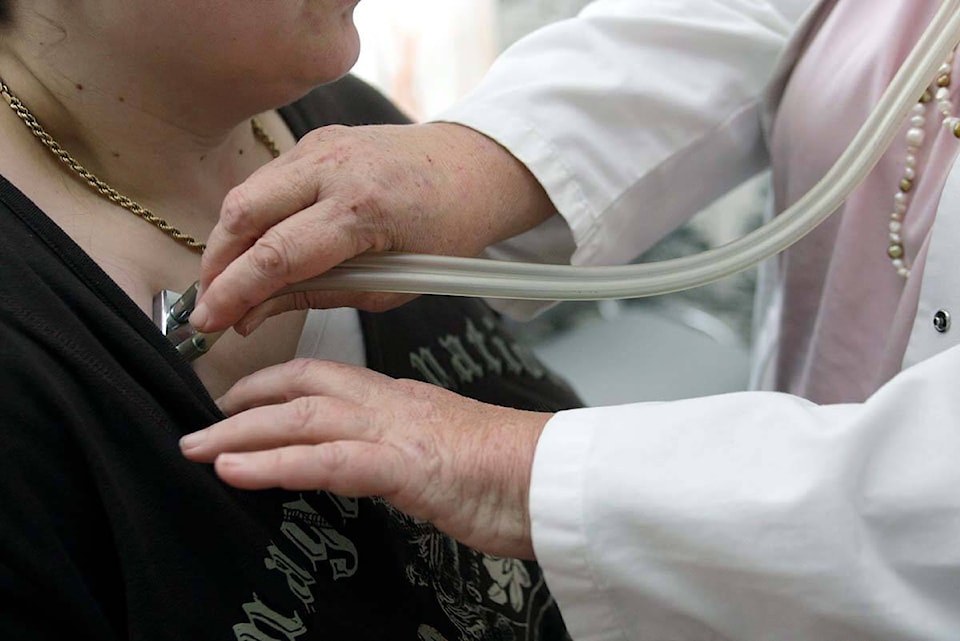By Rochelle Baker, Local Journalism Initiative Reporter
Rural communities in B.C. will continue to suffer critical doctor shortages and the knock-on effect of repeated emergency room closures until B.C.’s primary care system is modernized, an expert says.
New physicians are shunning family practice, while established doctors are abandoning it because of the way primary health care is delivered, said Dr. Rita McCracken, a family physician and researcher with the University of British Columbia’s Department of Family Practice.
“The province is using this very antiquated idea of the family doctor as the provider for primary care infrastructure,” she said.
The framework of primary health care is still based on family doctors’ medical practice from the 1960s and the birth of medicare and that is no longer a viable model, McCracken said.
The overhead costs, complexity and administrative burdens of private practice are radically different from decades past and new doctors don’t want the heavy burdens and gruelling hours associated with it, she said.
Team-based medicine in a publicly funded facility with administrative support providing wrap-around services — such as rapid access to social workers, counsellors, nurse practitioners and pharmacists — would alleviate doctors’ workloads and improve patient outcomes.
Investing in medical hubs and employing a well-resourced interdisciplinary team that supports one another professionally and emotionally would help rural communities recruit and retain family doctors, she added.
“Think about how much more attractive of a job it is than saying, `Please come to this community that is completely devoid of any kind of system-level primary care services.”’
One in five B.C. residents, approximately a million people, doesn’t have a family doctor, a situation that’s been ailing rural areas for decades and is now an urgent issue everywhere.
Doctor and nursing shortages and ER closures, compounded by the deplorable state of ambulance service in small communities, have small-town mayors uniting to push Health Minister Adrian Dix to transform rural health care.
The North Vancouver Island region, with more than 10,000 residents, has suffered prolonged or rotating closures of its emergency departments for much of the summer due to severe staffing shortages that are expected to get worse come fall.
A month-long closure at the Alert Bay ER has just been extended another two weeks, and the small ferry-dependent community is facing the possibility it won’t have any doctors on Cormorant Island by early December.
The region’s other ERs at Port Hardy and Port McNeill hospitals — dependent on family doctors for coverage — saw repeated closures this summer and are diverting patients from one hospital to another on a near-daily basis.
Island Health announced Thursday two new family physicians have signed two-year contracts to practise in Port McNeill. But that same day, the health authority announced another closure of the Port Hardy ER over the Labour Day weekend, effective Friday at 5 a.m. until 7 a.m. on Sunday.
“I think the North Island is quite likely a community in crisis, but quite frankly, every community is in crisis in B.C. right now,” said McCracken.
Primary care infrastructure in the province is largely funded through family doctors’ salaries, she said, and vanishes if they retire or leave a community.
The work differs, but surgeons aren’t expected to cover hospital overhead, she noted.
Nor do teachers provide the infrastructure, staff and schools necessary for student learning in a public education system.
Nearly half of family doctors surveyed would prefer to be a clinic employee rather than a small business owner, a research study by McCracken indicates.
And 70 per cent of doctors want to be part of an interdisciplinary team, while 81 per cent want planned vacations and parental leave.
The province has taken steps to establish a network of different medical professionals in geographic areas for doctors to call upon, called Primary Care Networks (PCN), but it’s not clear if they are effective or readily available across the province, she said.
“The concept of a PCN is nice but there needs to be more consistent funding and actual infrastructure put behind them,” McCracken said, noting many of the services doctors refer patients to are virtual.
“And if someone could show me how PCNs have improved access to primary care, that would be amazing, but we’re not even talking about that being a metric.”
The province recently announced interim funding for doctors while it works on a new compensation model, expected this fall.
But reshaping the primary care system must involve more than what doctors want and need, McCracken said.
Medical professionals, service providers and patients need to have a voice, too, she said.
“We have notoriously left out all the other people who need to be involved in that conversation, such as researchers, community members, patients with lived experience in not having a family doctor or even people who have,” McCracken said.
“I think one of the reasons we’re in this situation is because the solutions are only ever negotiated between doctors and the (Ministry of Health).”
Health Minister Adrian Dix’s office has not responded to questions or repeated requests for comment by Canada’s National Observer.
North Island MLA and deputy government whip Michele Babchuk also has not been available for an interview despite CNO requests.
